
Latest News Regarding
Horn of Africa
Somaliland President sacks Attorney General and Development Minister
Somaliland President sacks Attorney General and Development Minister

Source: Hiiraan Online, Thursday November 24, 2022
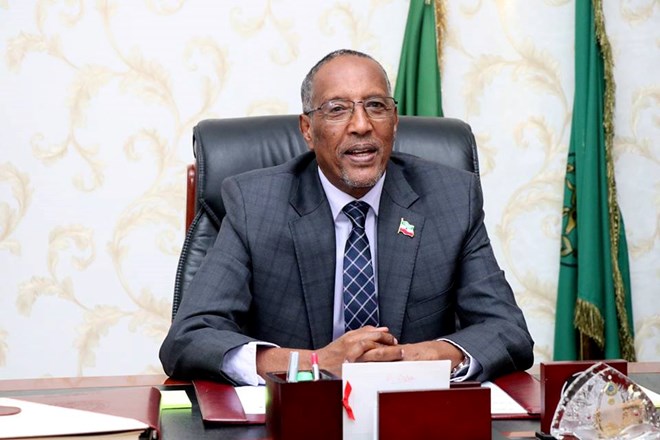
Hargeisa (HOL) – Somaliland President Muse Bihi Abdi fired the Minister of Development and Investment, Abdullahi Abdirahman Aare, and attorney general, Hassan Ahmed Adan.
In a decree from the Presidential Palace on Wednesday, President Bihi appointed Amina Elmi Farid Baded as the minister of Investment.
Abdirahman Jamac Hayaan Horri was appointed as the Attorney General.
The President did not elaborate on why the minister and attorney general were sacked. However, it comes barely days after Somaliland opposition leaders declared that they no longer recognize Muse Bihi as a legitimate President after his mandate officially ended on November 13.
Muse Bihi Abdi was elected President of the self-proclaimed republic of the Horn of Africa on a five-year mandate in 2017, and the election was scheduled for November 13, a month before his term expires.
Trapped between extremists and extreme weather, Somalis brace for famine
Trapped between extremists and extreme weather, Somalis brace for famine

Source: The New York Times, Tuesday November 22, 2022
By Declan Walsh
Photographs by Andrea Bruce
The worst drought in 40 years is pushing Somalia to the brink. If it triggers a rare famine declaration, the militant group Al Shabab will also be to blame.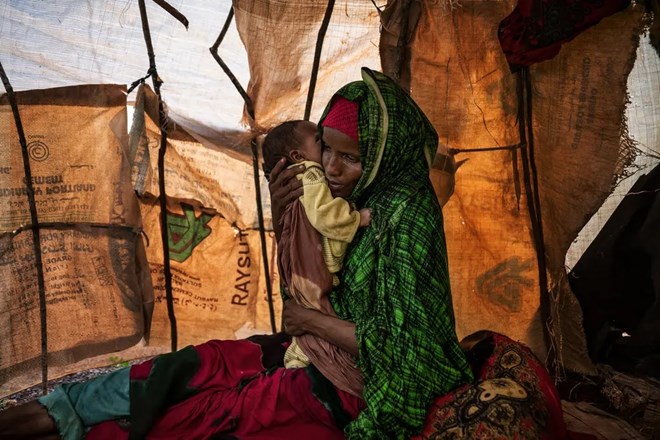
“I’m begging Allah not to take another baby from me.” A day after the death of her 3-year-old daughter at a camp in Baidoa, Somalia, Faduma Adan Abdirahman held her newborn son tight.
The sea of rag-and-stick tents that spreads in every direction from the hungry, embattled city of Baidoa, in southern Somalia, gives way to sprawling plains controlled by the militants of Al Shabab.
Over 165,000 refugees have streamed into Baidoa since early last year, fleeing the ravages of Somalia’s fiercest drought in 40 years. Among them was Maryam, a 2-year-old girl whose family had lost everything.
The drought withered their crops, starved their animals and transformed their modest farm into a howling dust bowl. They endured a five-day trek to Baidoa, braving Islamist check posts, hoping to reach safety.
But one recent afternoon Maryam, weak from hunger and sickness, began to cough and vomit. Her mother, cradling Maryam in her arms, called for help.
Calamity beckons in Somalia, where a combination of extreme weather and extremists is driving the country toward its most serious humanitarian disaster in over a decade. Five seasons of failed rains, linked to climate change, have hit 7.8 million Somalis, 300,000 of whom are experiencing severe starvation.
But weather alone doesn’t create famine, experts say — it takes people, too. The biggest obstacle to a massive relief effort is the presence of Al Shabab, the extremists who dispatch suicide bombers and forcibly recruit children, tax farmers and prevent aid groups from reaching the worst-hit areas.
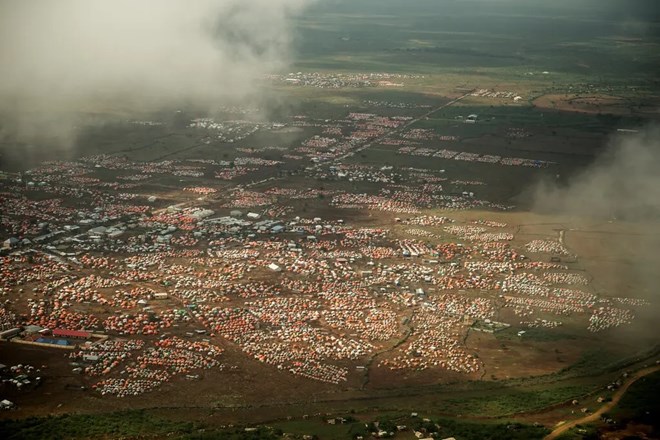
Dome-shaped tents spread in every direction from Baidoa, a city surrounded by forces from the Al Shabab militant group in southern Somalia.
Somalis are waiting to see if aid experts will formally declare a famine in the coming weeks. Many already fear that history is repeating: Somalia’s last two great famines, in 1992 and 2011, which killed half a million people between them, were also the product of drought supercharged by war.
Designated levels of hunger mean nothing for Maryam, who died just before sunset on Nov. 3. Men from the camp carried her remains, wrapped in a donated shroud, in a quiet procession to a small graveyard on the edge of Baidoa. A small twig with green shoots marks her grave.
Her mother, Nurtay Nurow, remained behind in their tent, mourning the third child she has lost to the drought.
“I felt so helpless,” she said the next day, resigned yet dry-eyed, her two remaining sons sitting silently by her side.
It has been a year since Somalia’s government declared the drought a national emergency, but aid workers say the crisis is now critical. Every minute, on average, a severely malnourished child is admitted to a health facility for treatment. Hospital wards are filling with starving children suffering from measles, pneumonia and other diseases that prey on the weak.
At least 1.1 million people have abandoned their homes for crowded, dirty camps like the ones around Baidoa. The U.N. says it needs an additional $1 billion for emergency food, water and shelter.
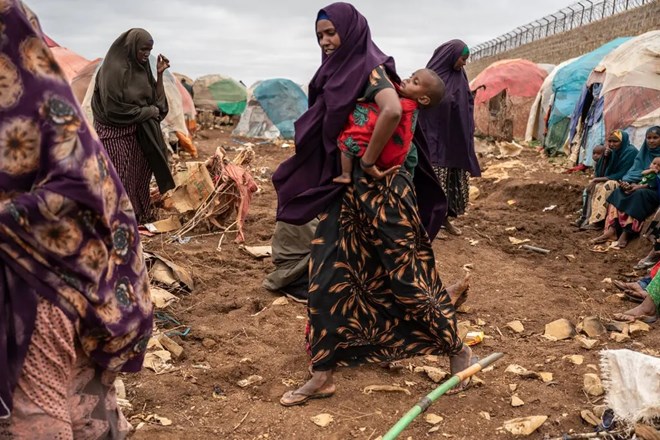
A camp for drought victims in Baidoa. The two-year drought has affected 7.8 million people in Somalia, twice as many as at the start of 2022, and about 21 million across the Horn of Africa, according to the United Nations.
Without urgent action, at least 500,000 children will be at risk of death by mid-2023, “a pending nightmare we have not seen this century,” the UNICEF spokesman James Elder said recently.
Kenya and Ethiopia are also victims of the unrelenting two-year drought, which has pushed 21 million people in the Horn of Africa to the brink. But the situation is most acute in Somalia, where a grim confluence of factors has turned a crisis into a catastrophe.
Scientists say that longer and more frequent droughts are a product of climate change caused by the emissions of countries that are far richer than Somalia, which emits practically nothing. In 2019, according to the World Bank, Somalia produced 690 kilotons of carbon emissions — 1/7,000 as much as the United States, which produced 4.8 million kilotons.
Trapped between hostile forces that seem either intangible or invincible, Somalis are shouting for help.
“If these kids don’t get what they need, they are going to die,” said an aid worker, Ali Nur Mohamed, at a feeding center in Baidoa funded by World Vision. Around him, women extended their shawls to collect sachets of a peanut paste that revives starving infants.
“There are shortages of food, of water — of everything,” he said.
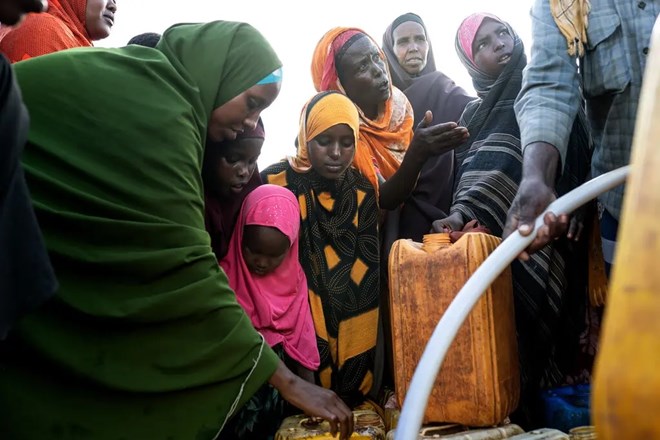
A donkey cart brings water to a camp housing people who fled the drought in Baidoa, in southern Somalia. Residents grabbed containers and ran for the cart as soon as it appeared.
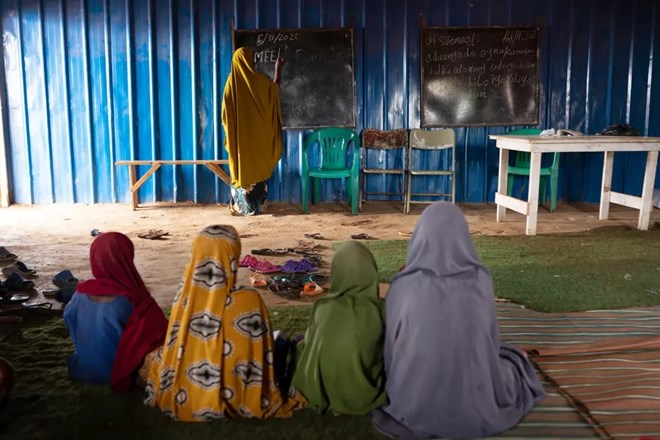
Leila Abdulrahman Ali, a volunteer teacher, leading a class in Baidoa for children forced to leave their homes by the country’s two-year drought. Ms. Ali lives in a tent nearby.
Baidoa, once known as the breadbasket of Somalia, has a decades-old association with famine. The skeletal bodies of the dead littered its streets in 1992, when a third of the town’s population starved to death over three months as failed harvests combined with a raging civil war. At the peak of the famine, 15 children died every day.
The tragedy prompted an ill-fated American military deployment to Somalia and a visit to Baidoa in 1993 by President George H.W. Bush, who hailed a “wonderful, wonderful mission of mercy” and vowed not to leave Somalis “in the lurch.”
But a year later the Americans had pulled out, following the infamous “Black Hawk Down” incident when Somali fighters shot down two American helicopters in the capital, Mogadishu.
A decades-long cycle of international interventions in Somalia, including billions of dollars in humanitarian aid and military support, have failed to stabilize the country. This year’s election of Hassan Sheikh Mohamud as president stoked new hopes that Al Shabab might be pushed back. But the militants retaliated on Oct. 29 with their deadliest attack in five years — a twin car bomb explosion in Mogadishu that killed over 100 people.
Baidoa, which the government recaptured from Al Shabab in 2012, has become a lifeline for the starving and the fearful. The U.N. said 165,000 people flooded into the city between April 2021 and July 22, adding to an existing refugee population of about 430,000. Arrivals since July, as yet unverified, number in the tens of thousands, U.N. officials say.
Baidoa’s crumbling streets are a maze of barriers and blast walls that resembles wartime Baghdad or Kabul. Aid workers travel in armored vehicles protected by armed guards.
Al Shabab’s influence begins within a few miles of the city limits, so foreigners are discouraged from lingering at relief camps or feeding centers for longer than 45 minutes.
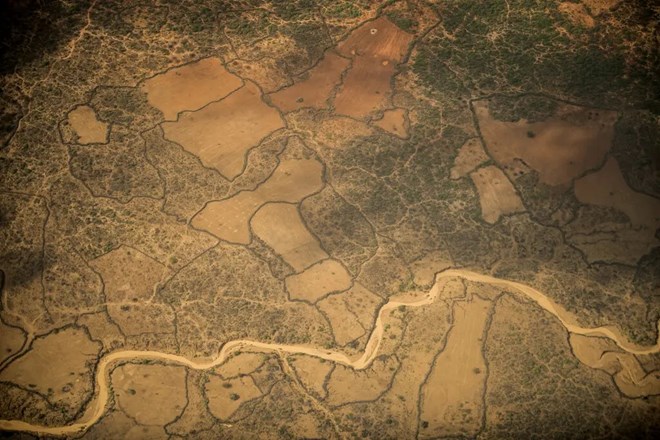
Parched farmland on the outskirts of Baidoa, in southern Somalia. Previous droughts led to famine in 1992 and 2011.
We arrived by air, because the roads are too dangerous, and were usually back in our hotel by 3 p.m., for security reasons.
In the camps, new arrivals described harrowing journeys across desolate landscapes. Isaq Hassano, 75, enumerated his personal toll — first his son, who died in their village; then his son’s wife, who bled to death during childbirth on a 10-day walk to Baidoa; then a newborn child, who died after they reached the camp; and finally Nimo, a 3-year-old girl who starved to death a few months ago.
That left Mr. Hassano caring for orphans, whom his wife supports by begging in Baidoa city, he said.
“We need something,” he told me, through a translator. “Make some efforts.”
A group of aid experts known as the I.P.C., which classifies humanitarian emergencies, is careful about using the word famine. So far, they have found that no entire region in Somalia has crossed that threshold, although some aid workers privately dispute that finding. In the past decade only two crises have qualified: Somalia in 2011, and parts of South Sudan in 2017.
The next I.P.C. assessment is expected by the end of November. Several aid officials and a senior diplomat said they anticipated a possible famine declaration in several regions, including the one around Baidoa.
Certainly, the international response compared with 2011 has been swifter and better organized; aid groups like World Vision have capitalized on a decade of experience in towns like Baidoa, where Al Shabab are no longer in control. The United States has given $870 million in humanitarian aid to Somalia this year, a USAID spokeswoman said — far more than other donors.
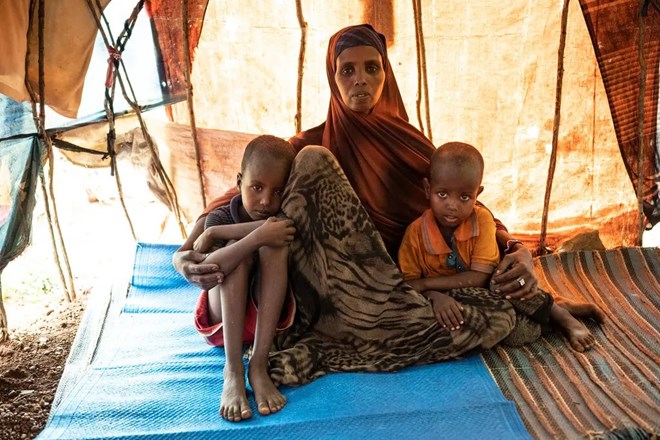
Nurtay Nurow mourned her 2-year-old daughter, Maryam, who died at a camp in Baidoa on Nov. 3. Ms. Nurow, who had already lost two children in the drought, sat with her two remaining sons.
Still, the exploding crisis is rapidly outpacing those efforts. About 900,000 drought-affected Somalis live in areas controlled by Al Shabab, with no access to aid. Many are believed to have died in their homes or on the roadside. Food is scarce in overcrowded camps, and sanitation is poor, leaving the weak vulnerable to disease. Few can afford water: Until it rained briefly in Baidoa a few weeks ago, a tanker of water cost $100.
At the Bay Regional Hospital in Baidoa, Ahado Abdullahi held her ailing daughter in one arm and a battered cellphone in the other. She bought the phone, a Chinese model held together with an elastic band, with $4, she said. After the drought killed her family’s six cows and eight goats in a remote village, she relied on the phone to receive a monthly $10 transfer from a relative in Mogadishu.
But the price of a large cup of rice, enough to feed five people, quadrupled to 60 cents during the drought, she said. Then her relative fell on hard times, and the payments stopped. Four of her children died, the latest in July.
Now Ms. Abdullahi nursed her daughter Asli, a 1-year-old with peeling skin who sucked her fingers — a telltale sign of hunger — and, after eight days in hospital, weighed only 100 grams — about three and a half ounces — more than when she was admitted.
Women and malnourished babies registered for food aid at a nutrition center in Baidoa run by World Vision and Save the Children.
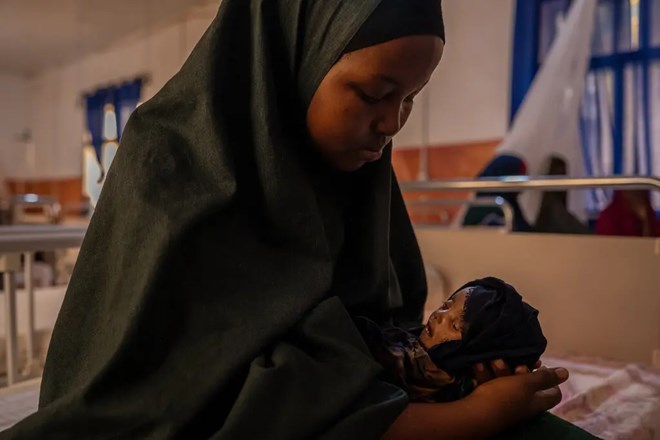
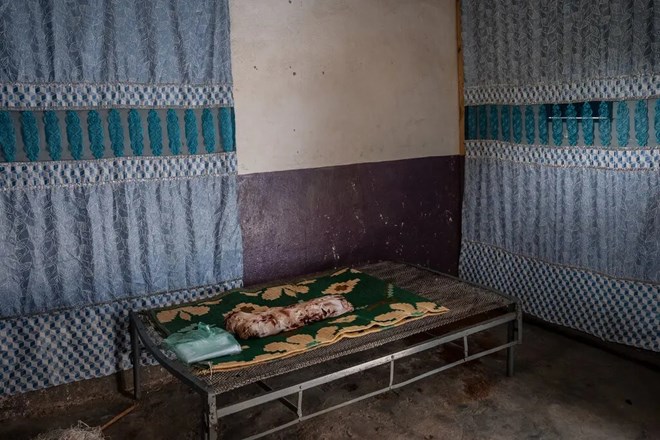
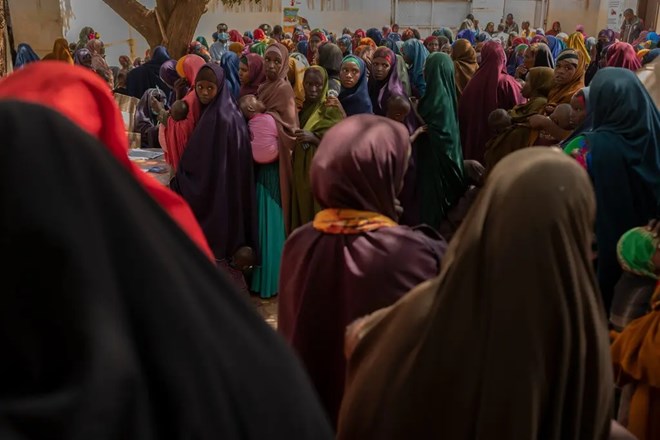
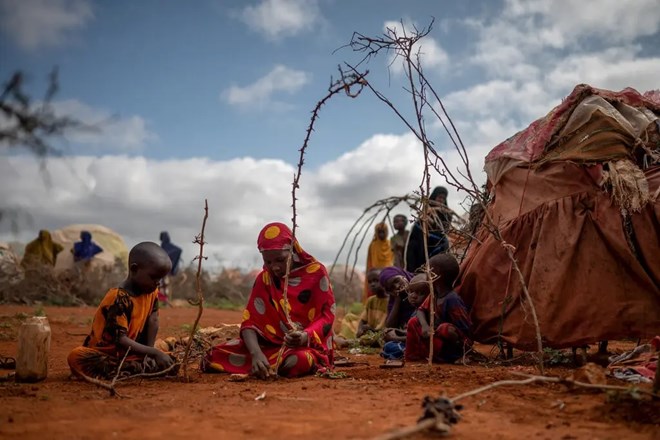

The forces driving Somalia’s misery are not abating. Meteorologists recently warned that model forecasts suggest the next rainy season starting in March could also fail, bringing a sixth consecutive season of drought.
Despite some recent gains by pro-government militias in central Somalia, Al Shabab remain formidable — even if their own fighters also suffer from the drought.
At Bay Regional Hospital, doctors identified several patients as the wives or daughters of Al Shabab fighters. They deserved care, even if the men in their families made the situation harder, a doctor added. But in nearby beds, other women described the extremists’ brutality.
One woman said she fled her home to avoid being forcibly married to a Shabab fighter. Another said militants shot dead her brother for helping others to escape their area. Others said nothing. In one camp, a man shushed his wife as she began to describe abuses by militants.
“People are listening,” he said softly. “Be quiet.”
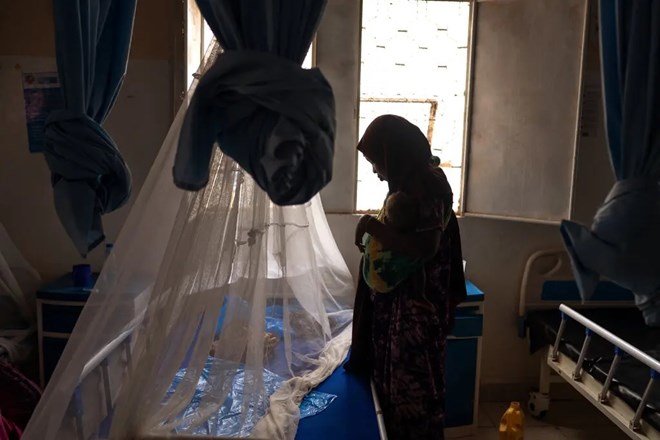
A mother and her child at Bay Regional Hospital in Baidoa, which treats about 800 patients every day, up from 250 a year ago.
In war-torn states hurt by climate, scant hope for new funds
In war-torn states hurt by climate, scant hope for new funds

Source: AP, Tuesday November 22, 2022
By SAMY MAGDY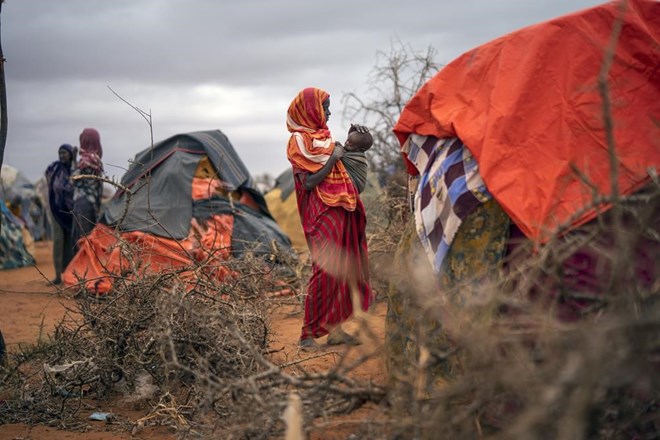
FILE – A Somali woman breastfeeds her child at a camp for displaced people on the outskirts of Dollow, Somalia on Sept. 20, 2022. In many Middle Eastern and African nations, climatic shocks killed hundreds and displaced thousands every year, causing worsening food shortages. With limited resources, they also are among the world’s poorest and most vulnerable to climate change impacts. (AP Photo/Jerome Delay, File)
SHARM EL-SHEIKH, Egypt (AP) — In conflict-ravaged nations like Yemen and Somalia, devastating floods and droughts kill hundreds of people and uproot tens of thousands from their homes.
These countries and many others in the Middle East and Africa have been plunged into turmoil and wars for several years. Now climate change is an added disaster for those already struggling for survival.
The United Nations’ climate conference, which wrapped up last weekend in Egypt, established a new fund to help poor, vulnerable countries hit hard by climate change. Countries like Yemen and Somalia are among the world’s poorest and more vulnerable to climate change impacts as they are less able to adapt to weather extremes.
But they have little or no access to climate financing.
Conflict-hit countries are unlikely to receive funds because they lack stable governments, said Nisreen el-Saim, chair of the U.N. Secretary General Youth Advisory Group.
“They don’t have institutions in order to have climate finance,” she said. “You have to have strong institutions, which don’t exist in many countries.”
Robert Mardini, the director general of the International Committee for the Red Cross, said that “close to zero amount of climate finance” is reaching conflict-affected nations “because decision makers who decide to allocate those funds consider that it is too risky to invest” there.
He warned that the worst is yet to come for Yemenis and Somalis amid worsening food shortages.
Those decision makers “need to reconsider the risk appetite because there are also big risks in not investing in these countries and huge (human) costs that should be avoided,” he said.
In Yemen, a third of the population — 19 million people — are not able to find sufficient food in 2022, up from 15 million last year. Those include 161,000 living in famine-like conditions, according to the U.N. food agency.
Children and women are the most affected, with 1.3 million pregnant and breastfeeding women and 2.2 million children under 5 years acutely malnourished. Of those, 538,000 children suffer from severe acute malnutrition, said the U.N. Office for the Coordination of Humanitarian Affairs.
Yemen has endured a brutal civil war since 2014, when the Iranian-backed Houthi rebels seized the capital, Sanaa, forcing the government into exile. A Saudi-led coalition entered the war in early 2015 to try restore the internationally recognized government to power.
The conflict devastated the country, created one of the world’s worst humanitarian crises and over the years, turned into a regional proxy war between Saudi Arabia and Iran. More than 150,000 people have been killed, including over 14,500 civilians.
The country has also suffered from droughts, soil erosion and yet worsening floods every year. According to the U.N. agriculture agency, this year’s rainfall was 45% higher compared to 2021.
At least 72 people were killed in flooding this year, and some 74,000 families in 19 of the country’s 22 provinces were affected, with those living in displacement camps bearing the brunt of the deluge. There are 4.3 million people displaced, most made homelss by the raging conflict, according to U.N. figures.
To meet the increasing humanitarian needs, the World Food Program says it needs more than $1 billion until March 2023.
The situation is worse in Somalia. The country is inching towards famine, the U.N. says. Prolonged drought has brought hunger and death to hundreds of thousands.
The country experienced its fifth consecutive failed rainy season this year, forcing at least 700,000 people from their homes, said Mohamed Osman, an economic advisor to the Somali president.
He said Somalia needs $55.5 billion in investment and assistance in the next 10 years to be able to recover from climatic shocks.
“Somalia is paying the price already,” he said. “We have received so far nothing and in total, Africa has received less.”
In the past two months alone, more than 55,000 Somalis fled drought and conflict to neighboring Kenya, and the number is expected to reach 120,000 in the next few months, according to the International Rescue Committee.
“Hundreds of thousands of Somali refugees will struggle to find life-saving assistance by fleeing to Kenya this year unless urgent steps are taken,” said IRC’s director in Kenya, Mohamed El Montassir Hussein.
Somalia descended into chaos following the 1991 ousting of longtime dictator Siad Barre by warlords who then turned on each other. The al-Shabab militants, who are affiliated with al-Qaida, are also active in the country which occupied a strategically important position in the Horn of Africa.
In Nigeria, seasonal rainfall and flooding killed more than 55 people in extreme weather scientists say was made 80 times more likely because of climate change. Around 20 million people in the country are estimated to face acute food insecurity amid crop losses and lower yields, according to official figures.
The ICRC has warned about an outbreak of cholera and other waterborne diseases amid dire a shortage of live-saving aid, including shelter, water, sanitation, food, and emergency healthcare.
The country’s northeastern regions where yearslong fighting against Islamic insurgency are centered were the worst hit.
“With more than 440,000 hectares of land already impacted by this flood, the magnitude of its effect on food security can be better imagined,” said Benson Agbro, head of the Nigerian Red Cross Society’s disaster response.
Agbro added they urgently need more than $13.5 million to address dire humanitarian conditions in the most hard hit areas.
“But longer term, we also need to build resilience to climate shocks as we know that communities affected by conflict are among the most vulnerable to climate change,” he said.
The Russian war in Ukraine has also doubled the challenges and costs of living for people in conflict-hit countries, according Mardini of the Red Cross.
“There is a knock-on effect of the Ukraine international armed conflict,” he said, pointing to the skyrocketing prices of food, energy, fertilizers and the straining supply chain.
“So doing the same thing in a place like Somalia or Mali is more costly for us, and we need to mobilize more funds from our donors to do the same type of project that we used to do a year ago,” he said.
Osman, the Somali official, said greater efforts are also needed for conflict-hit countries to access funds beyond the new proposed compensation deal. The package is just one part of a proposed “mosaic of funding arrangements” for climate vulnerable nations.
He called for “innovative ways” to receive funds, including initiatives on debt relief and help to build government institutions.
“No country should be left behind,” he said.
President Mohamud visits frontline as SNA continues anti-terror operations
President Mohamud visits frontline as SNA continues anti-terror operations

Source: Hiiraan Online, Saturday November 19, 2022
https://www.facebook.com/plugins/video.php?height=314&href=https%3A%2F%2Fwww.facebook.com%2FVillaSomaliaOfficial%2Fvideos%2F466726985607826%2F&show_text=false&width=560&t=0
Beledweyne (HOL) – Somali President Hassan Sheikh Mohamud arrived in Hiiraan’s Mahas district on Saturday, one of the battlefronts in the ongoing offensive against al-Shabab in central and south Somalia.
Hirshabelle’s Vice President, federal and regional lawmakers, district officials and residents welcomed the President and his delegation at the airport.
President Hassan Sheikh commended the people and military forces for their recent successes in the fight against terrorism by showing courage and solidarity. He emphasized the government’s support for the areas of their people and decided to liberate “khawarijs,” a term for someone who deviates from Islam.
“As long as I am the President, the government of Somalia is determined to eradicate al-Shabab from the country, to eliminate any terrorism. Elbur, Haradhere, Aden Yabal and other areas will be liberated soon,” he added.
President Mohamud listened to a report from Mahas residents urgently requesting government services. He promised that the federal government would work with the regional government to deliver government services to the areas freed from the militants.
Villa Somalia reported that President Hassan Sheikh Mohamud would visit other towns and villages on the frontlines, including nearby Galgadud and Mudug regions.
Speaking at the opening of Somalia’s second session of Parliament on Tuesday, Hassan Sheikh Mohamud vowed to continue the “all-out war” against terrorism.
According to military officials, Somali government forces backed by local clan militia liberated scores of villages in the Hiiraan region, killing over a thousand al-Shabab militants in recent months.
The al Qaeda-linked militants, meanwhile, have struck back with deadly attacks.
At least 613 civilians have been killed and 948 injured so far in 2022, according to the latest UN figures – the highest since 2017 and an increase of more than 30% from last year.
121 people were killed and 330 others seriously wounded in the group’s latest major attack after a twin-car bomb attack at Somalia’s federal Ministry of Education in Mogadishu on October 30th.
Al-Shabab has been fighting to topple Somalia’s internationally-backed government for more than 15 years. Government troops supported by local militias are currently engaged in an offensive that has successfully retaken several areas controlled by al-Shabab in central Somalia.
Somalia: UN arms embargo impedes efforts to rebuild army, counter Al Shabab
Somalia: UN arms embargo impedes efforts to rebuild army, counter Al Shabab

Source: TRT, World, Sunday November 20, 2022
Mogadishu urged the UN Security Council to “seriously consider” an African Union statement that encouraged the urgent lifting of the embargo.
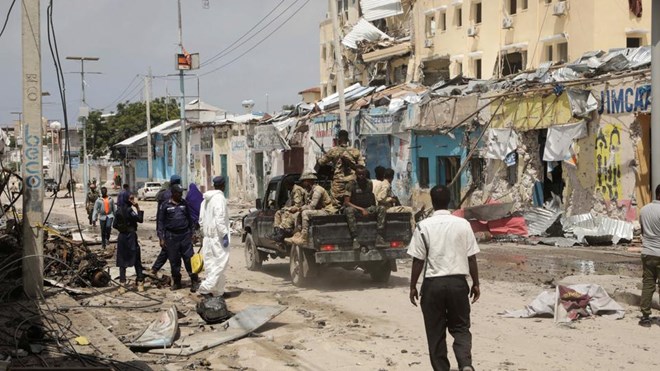
Somalia has been battling the Al Qaeda-affiliated terror group Al Shabab. (Reuters Archive)
Somalia has expressed that the United Nations Security Council’s army embargo extension impedes the nation’s efforts to rebuild its national army and security forces to counter terror threats.
The government in Somalia urged the UN on Friday to “seriously consider” the Africa Union Peace and Security Communique in July that called for the urgent lifting of the embargo.
The Security Council resolution was approved by a vote of 11-0 on Thursday, with Russia, China, Gabon and Ghana abstaining in support of the call by Mogadishu, backed by the African Union, to lift the arms embargo.
The British-drafted resolution does modify the arms embargo to reflect the government’s progress in improving its management of weapons and ammunition, but keeps in place the codified arms embargo, a ban on the sale or transfer of key components of improvised explosive devices that Al Shabab has used, a ban on the import and export of Somali charcoal that was a key money-earner, and travel bans and asset freezes on individuals threatening peace and associated with Al Shabab, including by financing or facilitating its activities.
‘Double standards’
The Somali permanent representative to the UN, Abukar Dahir Osman, described the extension as “unjust and unfair double standards … preventing the government of Somalia to legally obtain military lethal equipment to rebuild its national army.”
He warned that the arms embargo, which is the longest UN sanctions regime, is hindering efforts to rebuild the country’s security forces to counter Al Shabab.
The army used “a major portion” of its armaments during engagements with Al Shabab in the last four months, Osman said, and as a result of the arms embargo renewal, “our hands are tied in the fight against the ruthless enemy at this most critical time.”
Osman said victims of Somalia’s terrorist groups are asking why lifting the arms embargo is a threat to international peace and security while other countries are being armed to defend their territory and people.
Somalia has been battling the Al Qaeda-affiliated terror group, Al Shabab, which has increased attacks since new President Hassan Sheikh Mohamud announced a total war against the group, including efforts to shut down its financial network.
Growing insecurity
Abdi Isack, an independent analyst based in Mogadishu, told Türkiye’s state-run Anadolu Agency that if the embargo is not lifted, the government may not be able to liberate the country from terrorists because both sides have similar weapons.
“The government should continue the military reform and make a clear roadmap and address the international concerns in order for the government to ensure that the embargo be lifted and get the military equipment needed to defeat the terrorists,” he said.
Somalia has been plagued by insecurity for years, with Al Shabab being one of the main threats. The UN has warned of growing instability in the country, with reports earlier this year detailing attacks by Al Shabab and pro-Daesh groups.
The Security Council imposed the arms embargo on Somalia in 1992 to cut the flow of weapons to feuding clan-based warlords who toppled dictator Mohamed Siad Barre the previous year, plunging the country into civil war.
Somalia established a functioning transitional government in 2012 and has been working to rebuild stability in the face of terrorist attacks and one of the worst droughts the country has experienced that has brought thousands to the brink of famine.
There were at least 651 killed and 867 injured in terror attacks in Somalia in 2018. That was followed by 591 killed and 868 injured in 2019, according to the UN in Somalia.
Ethiopia starts exporting electricity to neighboring Kenya
Ethiopia starts exporting electricity to neighboring Kenya

Source: Bloomberg, ByFasika Tadesse
Sunday November 20, 2022
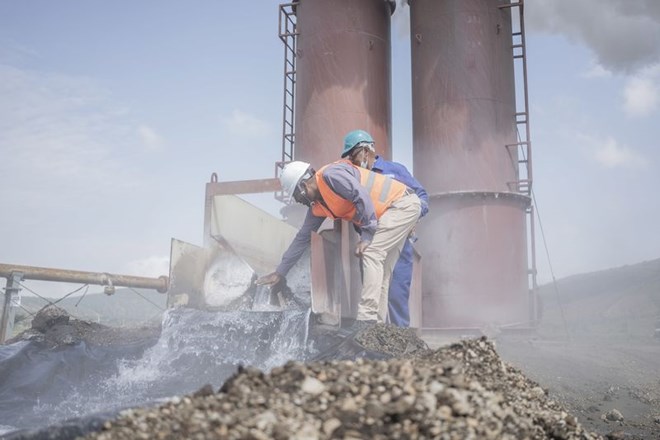
Workers check the water temperature of an outlet at the Aluto-Langano geothermal power station, operated by Ethiopian Electric Power, in Ziway, Ethiopia.Photographer: Amanuel Sileshi/Bloomberg
Ethiopia has started exporting electricity to neighboring Kenya following a week of testing of a new transmission line, Ethiopian Electric Power said.
The $500 million line has capacity to transmit 2,000 megawatts of electricity, potentially earning Ethiopia as much as $100 million annually.
“Ethiopia has completed activities to ensure uninterrupted and reliable transmission of power and it is expected that similar activities will be implemented by Kenyan side,” the company said in an emailed statement.
The Grand Ethiopian Renaissance Dam, a giant hydro-power dam on a Nile River tributary, began generating electricity earlier this year, a project it sees as key to economic development but which has stirred tensions with downstream neighbors Egypt and Sudan.
The $5 billion dam will be able to generate 5,150 megawatts of electricity once completed in 2024 and Ethiopia has signed supply agreements with Kenya, Sudan, Djibouti, Somaliland, Tanzania and South Sudan. The Horn of Africa nation earned $95.4 million from electricity exports last year, according to EEP.
— With assistance by Samuel Gebre
New AU special representative arrives in Somalia
New AU special representative arrives in Somalia
Source: Hiiraan Online, Sunday November 20, 2022
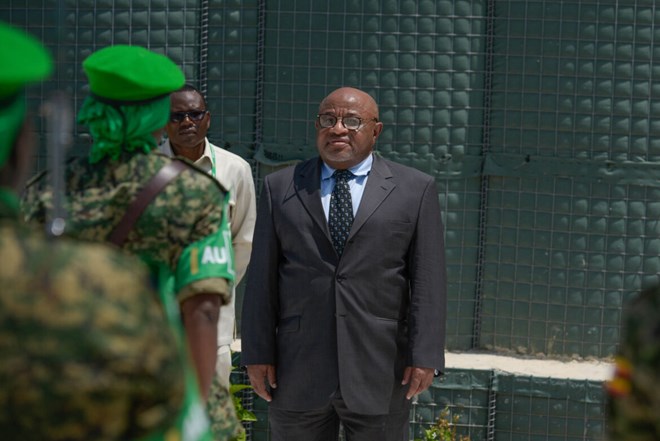
Mogadishu—The newly appointed Special Representative of the African Union Commission Chairperson (SRCC), Ambassador Mohammed El-Amine Souef, today arrived in Somalia to take up his duties as the Head of the African Union Transition Mission in Somalia (ATMIS).
On arrival at Aden Abdulle International Airport in Mogadishu, Ambassador Souef, was met by the Deputy Special Representative of the African Union Commission Chairperson (DSRCC) Ms. Fiona Lortan, senior military and police officials of ATMIS and the Somalia Deputy Minister of Foreign Affairs and International Cooperation, Isaak Mohamud Mursal.
advertisementsAfter brief engagements in the VIP area at the airport, Ambassador Souef proceeded to ATMIS Mission Headquarters, where he inspected a quarter guard mounted by ATMIS troops from Uganda. He later met with staff and held a closed-door security briefing with top ATMIS leadership.
In his role as the SRCC and Head of ATMIS, Ambassador Souef, will oversee the military, police, and civilian components of ATMIS work closely with partners to restoring security, stability and continued political processes.
Klimatkrisen är en kris med flera lager
Klimatkrisen är en kris med flera lager
Source: ForumCiv, Nyhet – 2022-11-16Klimatkrisen kan inte ses som en enskild fråga. Det finns flera samband mellan mänskliga rättigheter, jämställdhet, hållbar fred och miljö. “Vi måste få människor att förstå att klimatkrisen är ingen isolerad kris. Den har jättemånga lager och får konsekvenser på många sätt som är svåra att förstå utan att gräva djupare i frågan”, säger Sara Hjelm på ActionAid.

När naturkatastrofer och extrema väder blir vanligare fördjupas de orättvisor som redan finns. Vi har pratat med några av våra medlemsorganisationer om deras arbete med klimaträttvisa.
Klimatkrisen är orättvis i flera bemärkelser. De som orsakat minst klimatavtryck är ofta de som drabbas hårdast – trots att rikare länder står för större utsläpp. Människor som lever i fattigdom är särskilt utsatta och sårbara för klimatförändringarnas effekt. På de platser som drabbas finns i sin tur grupper som drabbas ännu hårdare än andra. Dit hör kvinnor och flickor, icke-binära, minoriteter eller människor med funktionsnedsättningar.
– Ofta tänker man kanske på växthusgaser, utsläpp och rena naturkatastrofer. Men det finns så många lager i klimatförändringarnas effekter som inte bara handlar om de uppenbara saker som vi kanske får till oss genom medierapporteringen här i Sverige. Det är också sociala, ekonomiska och säkerhetsmässiga aspekter som inte minst drabbar flickor och kvinnor och andra grupper, säger Sara Hjelm på ActionAid.
– För oss är en stor utmaning är att se till att information om klimatförändringar finns tillgängligt för alla, men också att funktionsrättsorganisationer ska sitta med vid beslutsborden. Klimatrelaterade katastrofer som översvämningar, orkaner eller hungersnöd drabbar personer med funktionsnedsättning särskilt hårt och de är nästan aldrig inkluderade i beredskapsplaner. Om det bara finns ett varningssystem där man hör ett larm, hur ska döva personer då veta vad som hänt? säger Mia Munkhammar på MyRight.
Klimatkrisen fördjupar de orättvisor som finns
Klimatkrisen kan därför inte ses som en enskild fråga. Utan det hänger ihop med flera redan existerande sociala, politiska och ekonomiska ojämlikheter. När naturkatastrofer och extrema väder blir vanligare fördjupas de orättvisor som redan finns. Ens utsatthet påverkas väldigt mycket av vem man är.
– Vårt arbete centrerar kring urfolk och minoriteter som påverkas mycket av klimatförändringarna. I vårt arbete för klimatet, ser vi därför till att lokala perspektiv tas med och att vi ser till att de lösningar som tas fram har alla i åtanke. Klimatarbetet ska inte bekostas av de som förbrukar lägst resurser, säger Alexandra Klang på Svalorna Indien Bangladesh.
– Det kanske inte är så att när man tänker på klimatförändringar så tänker man direkt kvinnor och flickors särskilda utsatthet. Det är ett problem i sig, att jämställdhetsaspekten inte uppmärksammas i tillräckligt stor utsträckning, säger Sara Hjelm på ActionAid.
Jämställdhet och klimat hänger ihop
ActionAid arbetar bland annat med att utbilda kvinnor i ledarskap och katastrofberedskap. Så att de ska kunna bidra till att samhällen blir mindre sårbara och påverka beslut som rör deras liv och samhällen.
– I Etiopien, som är hårt drabbat av klimatförändringar och en fruktansvärd konflikt, är det de lokala kvinnogrupperna som på många platser leder katastrof-insatserna, säger Sara Hjelm på ActionAid.
Det finns flera exempel på hur jämställdhet och klimat hänger ihop. Bland annat ökar risken för att kvinnor och flickor ska utsättas för sexuellt våld och människohandel markant för kvinnor som tvingas fly.
– Det kan vara farligt för kvinnor om man väljer att lämna sin miljö där man har familj och vänner som skyddar en, säger Alexandra Klang på Svalorna Indien Bangladesh.
“Vem får ta besluten kring vilka åtgärder som ska göras?”
På samma sätt som det finns exempel på hur jämställdhet och klimat hänger ihop så kan man se hur människor ur andra grupper också drabbas hårt av klimatkrisen. Det arbete som MyRight gör handlar om att stärka rättigheter för människor med funktionsnedsättningar. Bland annat så vet man att människor med funktionsnedsättning i större utsträckning lever i fattigdom, har inte rätt till utbildning och prioriteras inte när det kommer till klimatarbete.
– Vi jobbar för de som påverkas allra hårdast av klimatförändringarna och arbetar för alla människor ska kunna ta del av de åtgärder som görs. Information måste utformas så att alla kan förstå och tillgodogöra sig den, säger Mia Munkhammar på MyRight.
Mia Munkhammar pekar också på att förutsättningarna för att arbeta med klimat- och miljöfrågor skiljer sig åt mellan människor. Att samhället inte gör det möjligt för alla att engagera sig och hävda sina rättigheter, eller bara vara med i det dagliga miljöarbetet i sin vardag.
– I vårt arbete med klimat- och miljöfrågor synliggör vi barn, unga och vuxna med funktionsnedsättning och hur olika förutsättningarna är för att kunna delta i arbetet för vår planet. Diskrimineringen syns på alla nivåer, från individer som inte kan bidra med återvinning för att stationen inte är anpassad till att vara uteslutna från beslutsborden. Ett exempel är från COP26 där lokalerna inte var anpassade efter rullstol och Israels energiminister inte kunde komma in till mötet.
Människor som drabbas värst av miljö- och klimatförändringar är ofta människor som nekas möjlighet att delta i beslutsprocesser som påverkar dem. Att stötta dem och deras organisering är avgörande för att skapa en värld där alla människor får leva ett fritt liv från miljöfaror.
– Vem får ta besluten kring vilka åtgärder som ska göras? Kvinnor och unga saknas ofta i de rummen. Kvinnorna är också oftast kvar på de platserna som drabbas hårdare. Till exempel landsbygden. Många män emigrerar till städerna. Kvinnorna är ofta ansvariga för jordbruket vilket påverkas väldigt hårt av klimatförändringarna. För oss på Framtidsjorden är det ett viktigt resultat att kvinnliga bönder erkänns för sin kunskap lokalt och fortsättningsvis kan ha ledande roller inom fortsatt omställning till ett ekologiskt och klimatanpassat jordbruk. Att inkludera kvinnor i arbetet med klimatomställning kan också innebära ringar på vattnet och förändra synen på begränsande könsroller, säger Evelina Sartori Valck på Framtidsjorden.
“Begreppet ‘klimaträttvisa’ var inte särskilt välkänt”
Att ta sig an klimatfrågan har också blivit aktuellt för organisationer som i vanliga fall inte bedriver påverkansarbete mot just klimat och miljö. En sådan organisation är Palestinagrupperna som nyligen antagit att de ska arbeta med klimaträttvisa.
– Begreppet “klimaträttvisa” var inte särskilt välkänt ur ett palestinskt perspektiv och vi fick börja med att sätta oss in i vad klimaträttvisa och klimatsårbarhet betyder på en global nivå. Då blev det snabbt tydligt att det går att se hela ockupationen av Palestina som en klimatrisk. Israels kontroll över, och exploatering av, naturresurserna i det palestinska ockuperade området har stor miljöpåverkan. Det har även de militära attackerna mot framför allt Gaza, som förstör infrastruktur för vatten och sanitet, säger Johanna Wallin på Palestinagrupperna i Sverige.
Konkret pekar Palestinagrupperna på flera områden där ockupationen av Palestina innebär klimatrisker och ökar palestiniers klimatsårbarhet.
– En av de tydligaste är vattenfrågan. Det är generellt en bristvara i mellanöstern. Israel och Palestina är beroende av samma vattenkällor, när dessa kontrolleras och utnyttjas av enbart en part så blir det ännu mindre över till den andra. Vissa områden i Palestina är extra utsatta av ockupationsmakten och det är ofta på platser där marken är särskilt bördig eller där grundvattenkällor finns. Israel har kontroll över mer än 80% av vattnet och palestinier har inte möjlighet att nyttja vattenkällor på sin egen mark. Det kan finnas vattenledningar som går genom en palestinsk by, men som de inte har tillgång till. Ledningarna fortsätter till israeliska bosättningar på ockuperat område, som är olagliga enligt internationell rätt, och palestinier tvingas köpa tillbaka sitt eget vatten av israeliska företag.
Palestinagrupperna lyfter också att klimatfrågan kan förena aktivister på ett sätt som man inte är van vid.
– Samtidigt som palestinsk klimataktivism är svår att bedriva på större skala så länge man är under ockupation, är det ett område där det finns potential att skapa allianser med globala klimat- och miljörörelser. Det är också ett sätt att samlas och göra något konkret. Människor runtom i Palestina startar gemenskapsodlingar, fröbanker för att bevara kulturarvssorter och kooperativ för ekologiskt jordbruk och rättvis handel.
“Finns en tydlig skuld hos rikare länder”
Klimaträttvisar handlar också om att bördor och eventuella värden som skapas genom klimatinsatser fördelas rättvist. Helt enkelt att de länder som bidragit mest till klimatförändringarna också borde ta ansvaret för följderna.
– I klimatfrågan finns en tydlig skuld hos rikare länder. Vilket talar ännu mer för att resurserna måste fördelas rättvisare, säger Sara Hjelm på ActionAid.
I samband med klimattoppmötet COP27 driver ActionAid frågan om ”Loss and damages”, som handlar om att det behövs ökad finansiering för att täcka kostnaderna för de skador och förluster som människor och samhällen drabbas av i klimatrelaterade katastrofer. Det kan handla om förlorad bostad, jordbruksmark, inkomst eller möjligheter till utbildning.
– Många höginkomstländer bär det tyngsta ansvaret för klimatkrisens effekter, men det finns ett visst motstånd från dessa länder att kompensera för de allvarliga och ofta väldigt långtgående skador som vi orsakar. Det behövs mer pengar och pengar öronmärkta för dessa ändamål, säger Sara Hjelm på ActionAid.
UN Climate Conference COP276 November-18 November 2022 | Sharm el-Sheikh, Egypt

Source: UN, UN Climate Conference COP276 November-18 November 2022 | Sharm el-Sheikh, Egypt
Faced with a growing energy crisis, record greenhouse gas concentrations, and increasing extreme weather events, COP27 seeks renewed solidarity between countries, to deliver on the landmark Paris Agreement, for people and the planet.
Heads of State, ministers and negotiators, along with climate activists, mayors, civil society representatives and CEOs will meet in the Egyptian coastal city of Sharm el-Sheikh for the largest annual gathering on climate action.
The 27th Conference of the Parties to the United Nations Framework Convention on Climate Change – COP27 – will build on the outcomes of COP26 to deliver action on an array of issues critical to tackling the climate emergency – from urgently reducing greenhouse gas emissions, building resilience and adapting to the inevitable impacts of climate change, to delivering on the commitments to finance climate action in developing countries.Subscribe here
Racism and discrimination against children rife in countries worldwide: UNICEF
Racism and discrimination against children rife in countries worldwide: UNICEF
Source: UNICEF, 17 November 2022Human Rights
Racism and discrimination against children based on their ethnicity, language and religion, are rife in countries across the world, according to a new report by the UN Children’s Fund, UNICEF, ahead of World Children’s Day on Sunday.
Gates Foundation pledges $7 billion for Africa as Ukraine war diverts donor cash
Gates Foundation pledges $7 billion for Africa as Ukraine war diverts donor cash

Source: Reuters, By Ayenat Mersie
Friday November 18, 2022
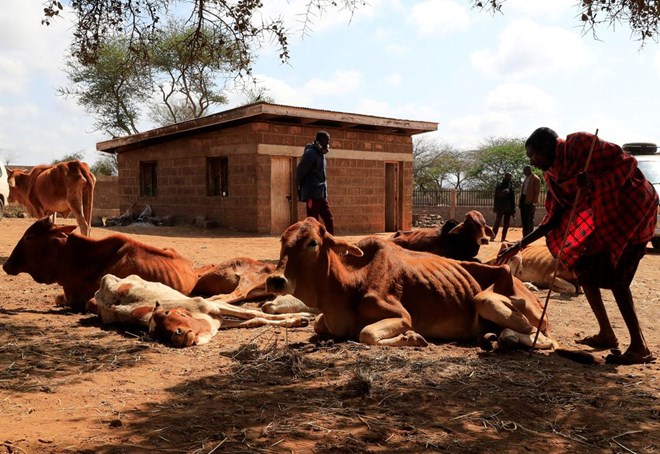
[2/2] A man from the Maasai pastoralist community affected by the worsening drought due to the failed rainy season, attends to an emaciated cow at a livestock market in Ilbisil settlement of Kajiado, Kenya October 17, 2022. REUTERS/Thomas Mukoya/File Photo
NAIROBI, Nov 17 (Reuters) – The Bill & Melinda Gates Foundation said on Thursday it was committing $7 billion to Africa over the next four years, as Bill Gates warned that the Ukraine crisis was reducing the amount of aid flowing to the continent.
The Foundation’s pledge, which is up 40% on the amount spent during the previous four years, will target projects tackling hunger, disease, poverty and gender inequality. Nigeria, Africa’s most populous country, will take the biggest share.
Humanitarian groups in Africa are grappling with the diversion of funding away towards Ukraine, and as Russia’s invasion increases goods prices globally, impacting aid operations.
“The European budgets are deeply affected by the Ukraine war and so right now the trend for aid is not to go up,” the billionaire co-founder of Microsoft Corp (MSFT.O) told journalists at the University of Nairobi during a visit to Kenya.
“If you take all aid (into Africa) including all climate aid – we’ll have a few years where it’ll probably go down.”
Kenya and much of East Africa is suffering its worst drought in four decades.
Drought, compounded by conflict and the COVID-19 pandemic, has pushed more than 10 million people in the region “to the very brink of a hunger crisis”, the U.S.-based Christian relief group World Vision said this week. The United Nations says it expects famine to be declared in parts of Somalia this year.
Following a meeting with Kenyan President William Ruto, Gates said on Wednesday that the Foundation would establish a regional office in Nairobi.
“Our foundation will continue to support solutions in health, agriculture, and other critical areas—and the systems to get them out of the labs and to the people who need them,” Gates, who runs the foundation with his ex-wife Melinda French Gates, said in a statement.
The Foundation in 2021 gave charitable support of $6.7 billion and last week pledged $1.4 billion to help the world’s smallholder farmers cope with climate change.
More aid reaches Ethiopia’s Tigray region following truce
More aid reaches Ethiopia’s Tigray region following truce
Source: AP, 53 minutes ago, 2022-11-16

Chief of Staff of Ethiopian Armed Forces Field Marshall Birhanu Jula, left, and Head of the Tigray Forces Lieutenant General Tadesse Werede, right, exchange signed copies of an agreement, at Ethiopian peace talks in Nairobi, Kenya Saturday, Nov. 12, 2022. Top military commanders from Ethiopia and its embattled Tigray region agreed Saturday to allow unhindered humanitarian access to the region and form a joint disarmament committee following last week’s truce. (AP Photo/Brian Inganga)
ADDIS ABABA, Ethiopia (AP) — More aid arrived in Ethiopia’s Tigray Wednesday following the signing of a truce earlier this month calling for unhindered humanitarian access to the war-torn northern region.
The U.N.’s World Food Program reported that its trucks had entered northwestern Tigray via the city of Gondar in the neighboring region of Amhara. The Gondar route had previously been closed to aid groups after the Tigray rebels recaptured large areas of that region in June 2021, with subsequent convoys passing through the region of Afar to the east of Tigray.
“More food, nutrition, medical cargo will follow imminently, via all routes possible,” the WFP said, adding that food will be delivered to people in the Tigray town of Mai Tsebri.
A WFP spokesperson told The Associated Press that the convoy consisted of 15 trucks carrying 300 tons of food.
The WFP convoy arrived a day after the International Committee of the Red Cross delivered 40 tons of medical supplies to Tigray’s capital, Mekele. The ICRC’s shipment was the first batch of international aid to reach Tigray since August.ADVERTISEMENT
Earth’s population reaches 8-billion milestone, but this upward trend may not continue for long
Earth’s population reaches 8-billion milestone, but this upward trend may not continue for long

Source: CBCnews, Wednesday November 16, 2022
BY Nicole Mortillaro
Last time we added 1 billion to the population was 2010
The United Nations on Tuesday is marking Earth’s population reaching eight billion people. (blvdone/Shutterstock)
On Tuesday, the United Nations officially marked the day the global population reached eight billion people.
It’s not an exact science. It may have happened weeks or months ago or may not even have happened yet. But the fact is that humans are abundant on this planet and our population is on an upward trend. At least until the end of the century.
In the UN’s World Population Prospects 2022 report, the international agency said that it expects the population to reach somewhere near 8.5 billion by 2030, 9.7 billion in 2050, 10.4 billion in the 2080s and remain at that level until 2100.
Between 1804 and 1927, the global population grew from one billion to two billion. It took 33 years after that to reach three billion. Since then, it’s taken roughly 12.6 years to add another billion people.
But at least one population expert is skeptical about this projection by the UN.
“This is the last time we’re probably going to have a conversation about reaching another billion marker,” said Darrell Bricker, CEO at Ipsos Public Affairs and a fellow at the University of Toronto’s Munk School of Global Affairs and Public Policy.
‘Where we’re going to end up’
“Somewhere between eight and nine billion is where we’re going to end up [by the end of the century],” said Bricker, who co-wrote Empty Planet: The Shock of Global Population Decline.
“The reason that it’s not going to increase more than that is because … China now is recording its lowest birth rate in history. India has just dropped below replacement rate for its birth rate. That’s 36 per cent of the entire global population that are now not replacing or not at replacement level birth rates.”
And once it gets to eight or nine billion people, he said, it’s likely it’ll drop even lower.
Patrick Gerland, chief of the population estimates and projections section in the UN’s population division, believes the agency’s numbers are sound, but does agree that the population will level off some time in the relatively near future.
“If you look at some of the results from some of the alternative projections that some other research groups have produced, the alternative kind of future scenarios that different researchers have produced tend to be even more conservative, to expect this overall decline to happen a bit earlier, and eventually a bit faster than we anticipate,” he said.
Gerland said the 10.4-billion projection is more of an upper range than a lower one.
Why the discrepancy between what Bricker anticipates and the UN projections?
“The UN always seems to be playing a game of catch-up. And I’ll give you a great example of this: They put out their last big recalculation of human fertility rates in 2017, so about five years ago. They have since revised down their population number from 11.2 billion people by the end of the century to 10.4 billion,” Bricker said.
And that 800-million decline is a big one, he said.
Though there are certainly exceptions, he said that globally, it’s the same: People are simply having fewer children.
“You know what I say when I go and do presentations on this?” Bricker said. “Every time I say, OK, these are a lot of big numbers. Stop. Think about your grandparents. How many brothers and sisters did they have? Now think about your parents? How many brothers and sisters do they have? Think about you? How many brothers and sisters do you have? Think about your kids? How many brothers and sisters do they have?”
Birth rates are on the decline almost everywhere
You don’t need to look far from home to see declines in population growth. In Canada, the annual rate of growth has dropped from roughly three per cent in the late 1950s to roughly 0.7 per cent in 2020. In the U.S., it went from just more than two per cent in the late 1950s to roughly 0.2 per cent in 2020.
Africa, which has had high birth rates, is also seeing a decline. Between 1950 and 1980, the continent had roughly 6.5 live births per woman.
However, now it’s roughly 4.4 live births per woman. It may not look like a steep decline, but that’s because not all parts of the continent are seeing the same rate of decline in births.
However, two of the biggest examples are in two of the most populous countries: China and India.
China has a population of roughly 1.4 billion people; India, slightly lower. But both countries have seen declining fertility rates.
“The single biggest factor [for population levelling off] is declining fertility rates,” Bricker said. “If you go back to places like India, their reproduction peaked somewhere in about the 1970s. And it’s been declining ever since.”
As for China, its one-child policy — an attempt by the Chinese government in the 1970s to curb population growth — was dropped in 2016, but the annual growth rate is stagnant at zero per cent, a sharp contrast to nearly 3.5 per cent in 1963.
“China today is very different from what it was one generation ago,” said Gerland.
“These kinds of transformational changes have happened within one generation. So the story is basically that many, many, many countries and regions face a certain type of problem that are already starting to become more [challenging because] of the population aging.”
Challenges ahead
The UN report also found that in 2021, the average fertility rate globally was 2.3 births per woman, down from five births per woman in 1950. That rate is forecast to drop further to 2.1 by 2050. It also noted that the global growth rate dropped to below one per cent for the first time since 1950.
At the same time, life expectancy is getting longer. In 2019, it reached 72.8 years globally, an increase of nearly nine years since 1990. The UN expects that to rise to roughly 77.2 years in 2050.
Bricker said that both of these things — a decline in births and an aging population — will present challenges we’ve not yet seen, particularly economically.
“When you’re dealing with a population that’s aging, you’re dealing basically with people who’ve gone through the consumptive part of their life,” he said.
“The only thing they’re going to be consuming now — more — is probably health-care services and leisure services. Are they going to be buying a lot of new cars? No. Are they going to be buying that new big family home where they’re going to have all sorts of cribs and baby walkers and all sorts of other things to buy? The answer’s no.”
And that’s something he thinks governments should keep in mind while looking ahead as the population declines.
“I think that we’re kind of sleepwalking into a future that’s going to be very difficult to manage,” Bricker said. “And that there are going to be all sorts of challenges that we need to start thinking about today.”
Implementation of the Ethiopian Peace Agreement
Implementation of the Ethiopian Peace Agreement
Source: Reuters published on 12 November 2022 an article titled “Ethiopia Combatants Sign Deal to Start Implementing Truce” by Ayenat Mersie.
Meeting in Kenya, military leaders from Ethiopia’s central government and Tigray Region agreed upon terms to implement the peace agreement signed in South Africa on 2 November. Significantly, they agreed that “disarmament of heavy weapons will be done with the withdrawal of foreign [read Eritrean] and non-ENDF (federal military) forces [read Amhara militia] from the region.”
Comment: The continued presence of Eritrean Defense Forces in Tigray Region and Amhara militia in Western Tigray is a particularly sensitive issue and not specifically mentioned in the agreement laying out the roadmap for implementation of the peace deal. The reference to “foreign” almost certainly refers to Eritrean forces while non-Ethiopian National Defense Force (ENDF) probably refers to Amhara militia.
World Cup 2022: Pakistan sends thousands of soldiers to help Qatar with security
World Cup 2022: Pakistan sends thousands of soldiers to help Qatar with security
Pakistan is the only country to deploy foot soldiers, with 4,500 infantry troops arriving in Qatar

People walk near a banner of the Qatar 2022 mascot La’eeb at a beach in Doha, 10 November 2022 (AFP)By MEE staffPublished date: 11 November 2022 14:42 UTC | Last update: 15 mins 9 secs ago11Shares






Pakistan has sent 4,500 soldiers to Qatar to help provide security for the World Cup, which is set to kick off next week.
Qatar has sought the help of security forces and police agencies from various countries, including France, Jordan, Turkey, Britain and the US, to ensure the safety of an estimated 1.2 million fans expected to attend the World Cup, which starts on 20 November.
However, Pakistan is the only country to send foot soldiers to Doha, with 4,500 infantry troops arriving in Qatar in recent weeks.
A senior Pakistani army officer told The Telegraph that the troops would be deployed “on security duties inside and outside venues in the way deemed fit by the Qatar authorities”.
The armed troops will guard football teams at hotels, marking the first significant occasion in which Islambad’s forces were sent abroad to provide security services for an international event.Imran Khan shooting: Pakistan has reached a tipping pointRead More »
Following a Qatari investment of $2bn, Pakistan announced in August that it would send troops to Qatar to help secure the World Cup.
A security team from Fifa had trained the Pakistani soldiers before they travelled to Qatar.
“[The Fifa team] shared the information about the exit and entry to the stadium, security of football teams, and other security aspects of the global event,” a Pakistani official told The Telegraph.
After it won the bid in 2010 to host the World Cup, Qatar introduced mandatory military service in 2014, asking men between 18 and 35 to spend four months in the armed forces.
In September, it called up hundreds of civilians, including diplomats summoned back from overseas, for mandatory military service and to operate security checkpoints.
However, Qatar’s army and police forces were short in numbers, and the country had to seek help from countries whose security agencies have experience managing stadium security queues and fans and detecting alcohol, drugs or weapons.
Turkey will send 3,000 riot police officers, while Britain is sending Royal Navy and Royal Air Force to help secure the sea and sky during the World Cup.
Amnesty International urges new government to adopt 10 point human rights plan
Amnesty International urges new government to adopt 10-point human rights plan

Source: Amnesty International, Tuesday November 15, 2022
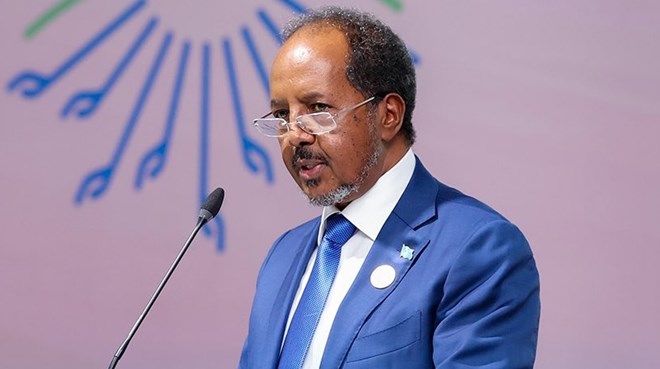
Six months after President Hassan Sheikh Mohamud took office, his government has yet to make good on its promises to guarantee justice and security for the people of Somalia. Amnesty International is today presenting the Somali government with a 10-point plan, outlining the steps it must take to improve the human rights situation in the country.
May 2022, the government stated that its priorities would include security, justice, reconciliation, and social development. However, more commitment and action is required to improve and prioritize human rights, to ensure accountability for violations and abuses, and to protect civilians.
“The election of President Hassan Sheikh Mohamud in May 2022 was an opportunity for the new administration to address many of the country’s outstanding human rights challenges, and to draw support from the international community to ensure sustainable change and progress in the promotion and protection of human rights in the country,” said Muleya Mwananyanda, Amnesty International’s Regional Director for East and Southern Africa.
“However, no concrete measures have been taken to prevent violations of human rights, to hold suspected perpetrators accountable for their actions, or to ensure access to justice and effective remedies including adequate compensation for victims. The government must prioritise the protection of civilians by ensuring that all Somali security forces receive appropriate training in human rights and humanitarian law. The government should also instruct all security forces not to target civilians and civilian objects during military operations.”
Amnesty International’s 10-point human rights agenda sets out what the Somali government must do:
* Protect civilians in conflict
By ensuring members of the military, police, and other government officials allegedly responsible for human rights violations are brought to justice in fair proceedings.
* Reform the judicial system
By creating a credible, fair, impartial and independent civilian judicial system. Authorities should also end the practice of trying civilians, including journalists, in military courts.
* Ensure justice and reparation for abuses committed by foreign forces
The government should seek reparations including compensation from the US government and from AMISOM (now ATMIS) for survivors and families of victims of unlawful attacks.
* Uphold and respect freedom of expression
By reviewing the problematic provisions of the media law, the penal code, and all other laws and directives that unduly restrict the right to freedom of expression and bring these laws in line with Somalia’s constitution and international human rights obligations. Authorities must also stop harassing and persecuting veteran journalist and media advocate, Abdalle Ahmed Mumin, by dropping all pending charges against him at the Banadir court, and by lifting travel restrictions against him.
* Guarantee and adequately resource access to the right to health for everyone
By ensuring proceeds from debt relief process are used to progressively increase health budget allocations from current 2% to ultimately meeting the Abuja declaration target of 15%
* Protect Internally Displaced Persons and end forced evictions
By ensuring that both security forces and private actors do not carry out forced evictions including of displaced people across the country.
*Safeguard children’s rights
By fast tracking the children’s Bill, protecting children from recruitment by armed groups and finalising the Female Genital Mutilation Bill.
* Safeguard women and girls’ human rights and protect them from sexual violence
By prioritising the enactment of laws that prohibit all forms of violence against women and girls.
*Mitigating against climate change and other crises
*Establish and operationalize the National Human Rights Commission
Tackling impunity, a priority
The ongoing conflict between Somali authorities and the armed group Al- Shabaab, which also involves allied regional and international forces including AFRICOM and AMISOM (now ATMIS), continues to have a devastating toll on civilians.
Over the years, Amnesty International has documented indiscriminate attacks, unlawful killings of civilians, torture, rape and other violations by all parties to the conflict including Somali security forces and allied militia in military operations. While successive governments have committed to security reforms, no meaningful improvements have been made, and impunity for violations remains widespread. This new government needs to prioritize accountability and tackle impunity for human rights violations.
Ethiopia government says army controls 70 percent of Tigray
Ethiopia government says army controls 70 percent of Tigray

Source: AFP, Friday November 11, 2022
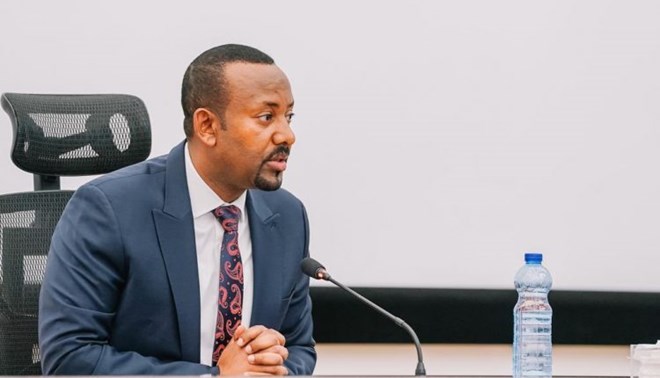
The Ethiopian government said Friday that 70 percent of the war-stricken northern region of Tigray was now under federal army control.
“70% of Tigray is under ENDF (Ethiopian National Defence Force),” Prime Minister Abiy Ahmed’s national security adviser Redwan Hussein posted on Twitter.
“Aid is flowing like no other times,” he said, adding that trucks of food and medicine had been sent to the strategic city of Shire.
AFP was not able to independently verify the claims, which come after the government and the rebel Tigray People’s Liberation Front (TPLF) reached a deal on November 2 aimed at ending their brutal two-year conflict.
Access to northern Ethiopia remains severely restricted and Tigray, which has a population of about six million people, is still inaccessible to journalists.
The northernmost region is in the grip of a severe humanitarian crisis due to lack of food and medicine, and there is limited access to basic services including electricity, banking and communications.
The breakthrough peace deal was signed in the South African capital Pretoria after little more than a week of negotiations brokered by the African Union between the federal government and TPLF delegations.
It notably calls for the cessation of hostilities, restoration of humanitarian aid, the re-establishment of federal authority over Tigray and the disarming of TPLF fighters.
The World Health Organization on Wednesday called for a massive influx of food and medicines into Tigray following the ceasefire deal, saying desperately-needed aid had not yet been allowed in.
“Many people are dying from treatable diseases. Many people are dying from starvation,” WHO chief Tedros Adhanom Ghebreyesus, who hails from Tigray, told a press conference.
“Even in the middle of fighting, civilians need food, need medicine. It cannot be a condition.”
Talks have been under way in the Kenyan capital Nairobi this week between representatives of the warring sides to follow up on the Pretoria deal.
The meetings were due to discuss the disarmament of the rebels, while the AU said they should also provide a “roadmap” for immediate humanitarian access and restoration of services” in Tigray.
The conflict between the TPLF and pro-Abiy forces, which include regional militias and the Eritrean army, has caused an untold number of deaths, forced more than two million from their homes and sparked reports of horrific abuses by all parties.
Estimates of casualties vary widely, with the United States saying that as many as half a million people have died, while the EU’s foreign envoy Josep Borrell said that more than 100,000 people may have been killed.
UN investigators have accused Addis Ababa of possible crimes against humanity in Tigray and of using starvation as a weapon of war — claims denied by the Ethiopian authorities.
Abiy — a Nobel Peace Prize laureate — sent troops into Tigray on November 4, 2020 to topple the TPLF, the region’s ruling party, in response to what he said were attacks by the group on federal army camps.
US strike in Somalia kills 17 al-Shabaab fighters, US Africa Command says
US strike in Somalia kills 17 al-Shabaab fighters, US Africa Command says

Source: CNN, By Michael Callahan, CNN
Friday November 11, 2022
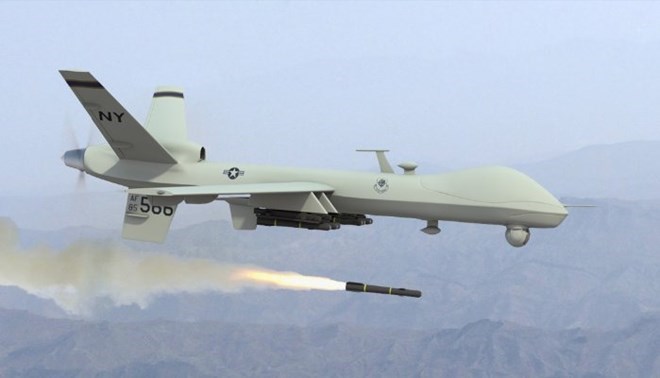
Washington CNN — The US military conducted a strike on Wednesday against the al-Shabaab terror group in Somalia, killing 17 terrorists, US Africa Command said in a statement on Friday.
The strike occurred approximately 285 kilometers northeast of Mogadishu at the request of the Somali government when Somali National Army forces were engaged with the al-Shabaab fighters.
advertisementsUS Africa Command said in a news release that no civilians were hurt or killed in the strike.
“Al-Shabaab is the largest and most deadly al-Qaeda network in the world and has proven both its will and capability to attack Somali, East African, and American civilians,” US Africa Command said.
The strike is the latest US military effort against al-Shabaab in Somalia, where the US has provided ongoing support to the government since President Joe Biden approved a Pentagon request to redeploy US troops to the area in an attempt to counter the terrorist group in May.
Last month, an airstrike in Somalia killed two members of al-Shabaab, according to US Africa Command.
CNN’s Shawna Mizelle contributed to this report.
Text of Agreement on Cessation of Hostilities between Ethiopia and the TPLF
Text of Agreement on Cessation of Hostilities between Ethiopia and the TPLF
Source: This African Union document is the text of the “Agreement for Lasting Peace through a Permanent Cessation of Hostilities between the Government of the Federal Democratic Republic of Ethiopia and the Tigray People’s Liberation Front (TPLF),” which took effect on 3 November 2022.
Comment: The surprisingly detailed document makes possible an end to the conflict between the central government and Tigray Region. In addition to implementing both the letter and spirit of the document, success will depend on acceptance of the agreement by Eritrea and the Amhara militia, who were not part of the peace process in South Africa. There was also no mention in the document to the future of contested western Tigray.
Building Democracy in Sudan
Building Democracy in Sudan
Source: The European Council on Foreign Relations published on 3 November 2022 a policy brief titled “Back to Barracks: Building Democracy after the Military Coup in Sudan” by Amgad Fareid Eltayeb, a Sudanese politician in Khartoum.
The author concludes that the international community has failed to find a viable political pathway to end Sudan’s military coup because it is too focused on working with elites. It needs to grasp that both military and civilian elites are responsible for failing to open politics to the people of Sudan. Violence, repression, and unrest are widespread and splits in the military camp threaten to spill over into civil war. These splits also result in drawing Sudan into regional conflicts in neighboring countries
